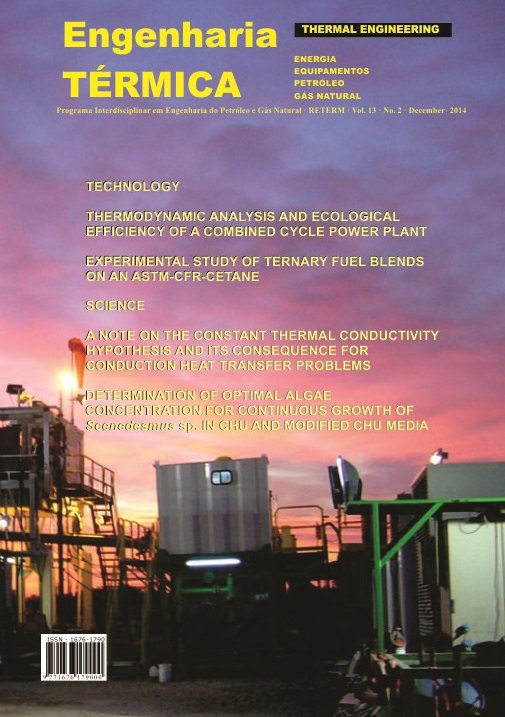STEADY STATE FIXED BED COMBUSTION OF WOOD PELLETS. A SIMPLE THEORETICAL MODEL
DOI:
https://doi.org/10.5380/reterm.v13i2.62097Keywords:
wood combustion, fixed bed, pellets, steady state, reaction controlAbstract
The combustion of biomass follows a sequence of several distinct phases which begin with drying, the subsequent pyrolysis with the release of volatile components that burn in gaseous phase and finally the combustion of carbonaceous resiue, the time consuming step. For small solid fuel boilers, as it is the case of pellet boilers for domestic heating, biomass particles are continuously burned in fixed bed boilers or heaters. In these appliances the furnace is a metallic basket into which fuel particles are thrown and burn. The combustion air is introduced through orifices drilled in this metallic basket although some lateral air entrances are also found. The gaseous flow is a piston flow, the particles fall under gravity on the upper bed surface and as they burn they slowly move downwards until their size is small enough to fall down through the air entrance orifices or are dragged by the upcoming combustion gas flow. So the gaseous current has an up flow movement while the solid particles move downwards. It is assumed that the bed is at uniform temperature and all the average properties of the gaseous flow are constant with the exception of the oxygen concentration that diminishes as the gas flow rises through the bed. The mathematical development of a simple model that allows the calculation of the steady state burning time of a biomass particle in fixed bed, the amount of energy released, the fixed bed size and its particle inventory, is hereby presented. The pedagogical interest of this model is pertinent because it presents, in a synthetic way, the relative importance of the combustion kinetic, the mass transfer mechanism and the reactor fluid dynamics, upon the lifetime of a biochar particle during its combustion process.
Downloads
Published
How to Cite
Issue
Section
License
Direitos Autorais para artigos publicados nesta revista são do autor, com direitos de primeira publicação para a revista. Em virtude da aparecerem nesta revista de acesso público, os artigos são de uso gratuito, com atribuições próprias, em aplicações educacionais e não-comerciais.



